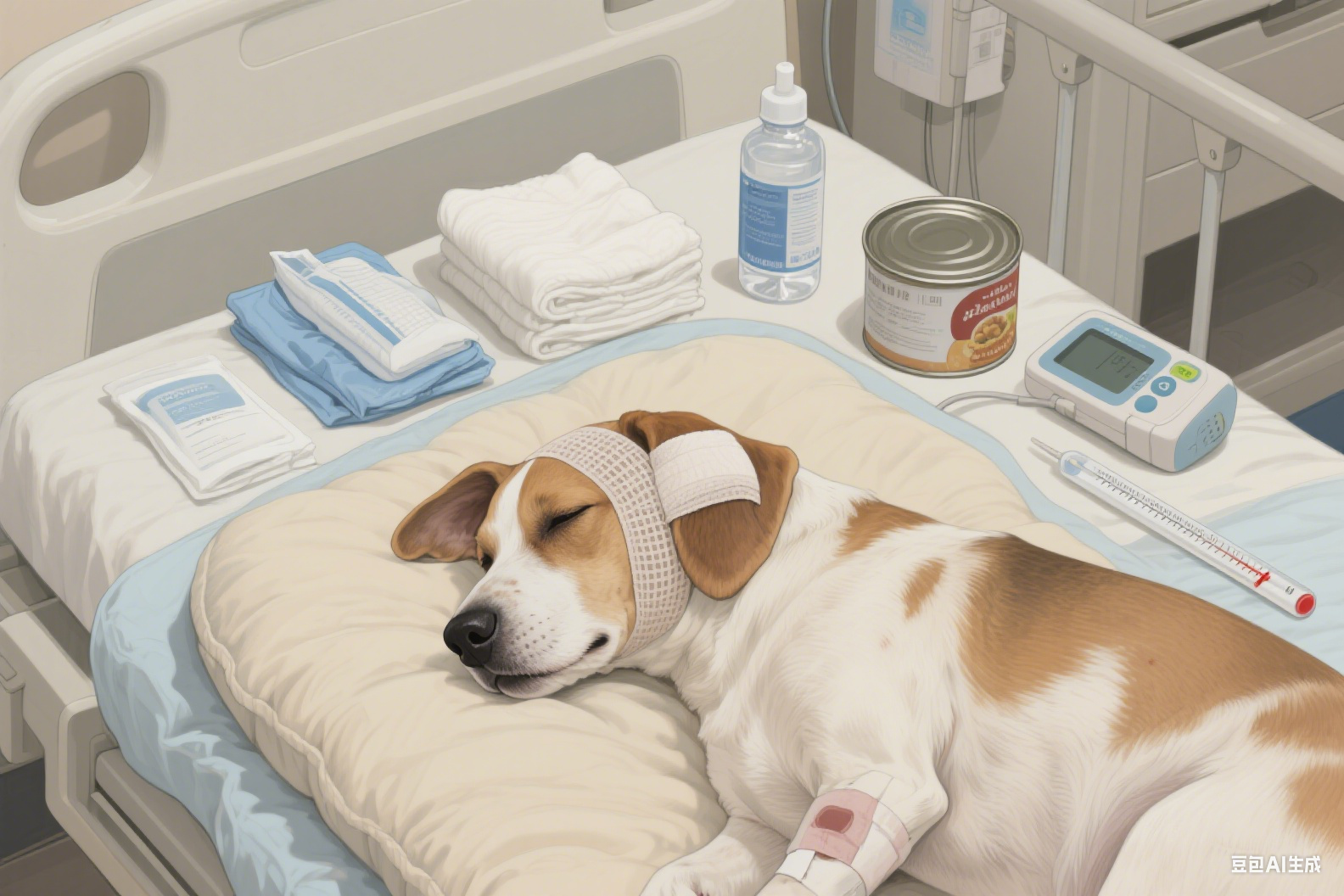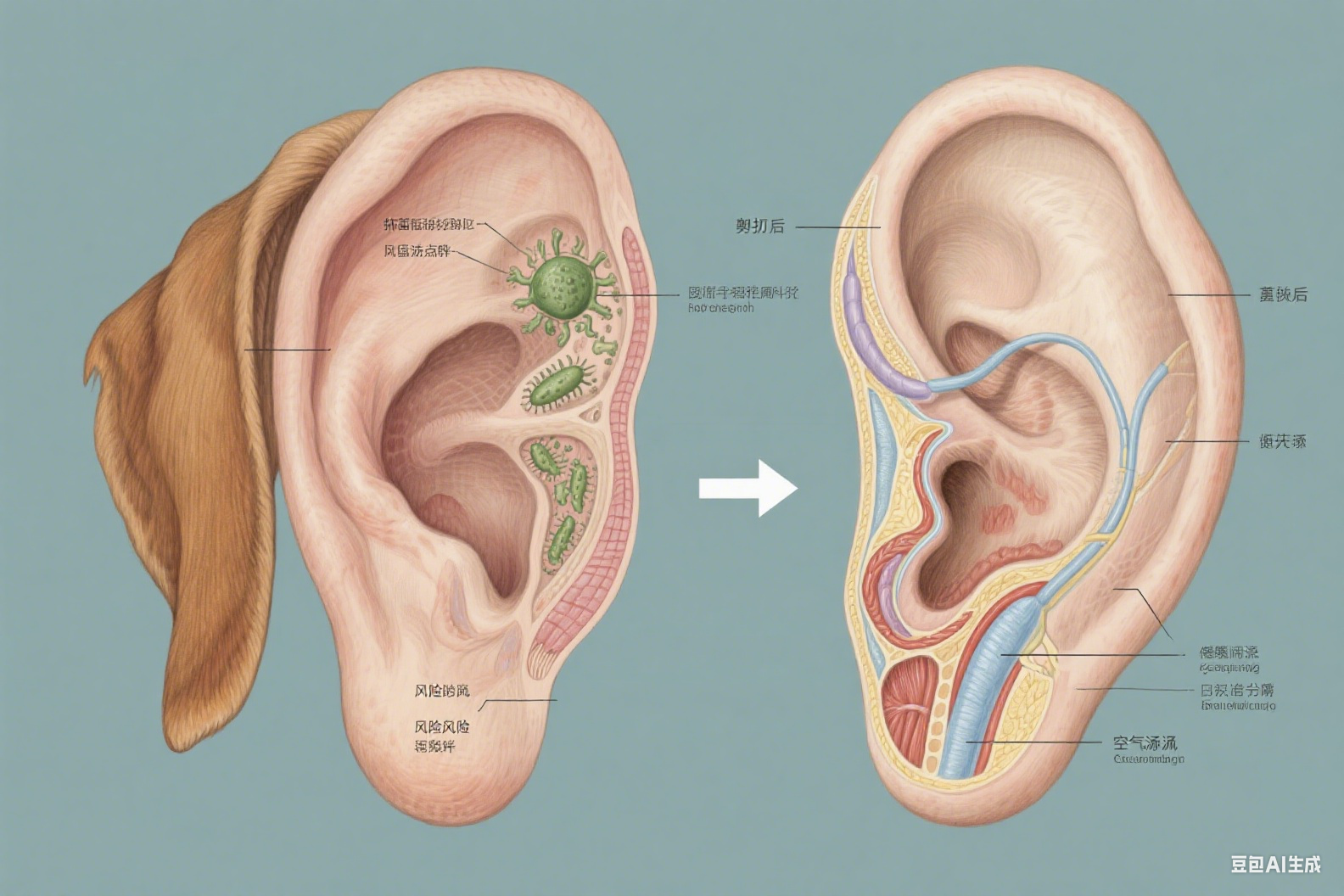In the canine world, ear shapes are as diverse as the breeds themselves—some stand perked and alert, exuding vitality, while others hang softly, radiating charm. For owners of specific breeds, however, ear cropping (a surgical technique to achieve upright ears) may be a consideration. Whether driven by breed standards, health concerns, or care needs, understanding this procedure is critical—especially for those relying on quality pet care products to support recovery. Below is a comprehensive breakdown of dog ear cropping, from its purpose to post-op care, and the role of pet product manufacturers in ensuring success.

1. Why Consider Ear Cropping for Dogs?
Ear cropping is not a one-size-fits-all choice; it typically stems from two key motivations: breed compliance and health optimization.
Breed Standard Requirements
For breeds like Dobermans, Schnauzers, and Great Danes, upright ears are a defining trait in major kennel club standards—including the American Kennel Club (AKC). Cropping helps these dogs meet breed-specific aesthetic criteria, highlighting their inherent temperament:
- Dobermans, for example, appear more regal and vigilant with cropped ears, aligning with their role as loyal guard dogs.
- Show-quality specimens often require cropping to compete, as drooping ears may be deemed "non-conforming" to breed guidelines.
Health and Hygiene Benefits
Drooping ears (common in Cocker Spaniels, Basset Hounds, and uncropped versions of the above breeds) create a warm, moist environment that traps debris, bacteria, and fungi—heightening the risk of ear infections, mites, or even hearing loss.
- Cropped, upright ears improve air circulation in the ear canal, reducing moisture buildup and infection risk.
- Erect ears also enhance sound localization, helping dogs detect environmental cues more effectively (a benefit for working or outdoor dogs).
2. Pre-Surgery Preparation: Laying the Groundwork for Safety
Ear cropping is a surgical procedure requiring anesthesia, so thorough pre-op preparation is non-negotiable to minimize risks. Veterinarians and pet owners should collaborate closely—with quality pet care products playing an early role.
Step 1: Comprehensive Veterinary Exam
- A full physical assessment (auscultation, palpation, visual inspection) confirms the dog’s overall health and suitability for surgery.
- Verify vaccination status (e.g., distemper, parvovirus) to prevent post-op infections—this is where pet product manufacturers’ vaccine storage supplies (e.g., temperature-controlled containers) support clinics.
- Review the dog’s medical history (allergies, prior surgeries) to tailor anesthesia and avoid complications.
Step 2: Fasting and Hydration Restrictions
- To prevent vomiting and aspiration during anesthesia, withhold food for 8–12 hours pre-surgery and water for 2–4 hours pre-surgery.
- Pet owners can use non-spill bowls (a staple product for pet care facilities) to control water intake in the hours leading up to the procedure.
3. Post-Surgery Care: The Critical Recovery Phase

Successful healing depends on diligent care—and access to reliable, pet-safe products. This is where pet product manufacturers directly support owners and veterinarians.
Vital Sign Monitoring
- After anesthesia, closely track the dog’s breathing, heart rate, and body temperature (normal range: 100.5–102.5°F/38–39.2°C).
- Use warming blankets (designed for post-anesthesia recovery, available from pet care brands) to regulate body temperature, as dogs struggle with thermoregulation post-surgery.
- Keep the dog’s head tilted to one side and use soft, absorbent wipes (hypoallergenic, lint-free—key products for pet first aid kits) to clean oral secretions and prevent choking.
Wound Cleaning and Dressing Changes
- Use sterile saline or veterinary-grade povidone-iodine (manufactured to pet safety standards) to gently remove blood scabs and secretions from the ear incision.
- Apply sterile gauze (lint-free, non-irritating—critical for avoiding infection) and secure with a breathable bandage. Most vets recommend daily dressing changes for the first 3–5 days.
- Pro Tip for Owners: Choose products labeled "for canine surgical use" (e.g., sterile wound cleansers from trusted pet product facilities) to avoid harsh chemicals that irritate sensitive tissue.
Ear Fixation and Stabilization
- After suturing, ears are secured in an upright position using breathable ear wraps or surgical tape (designed to avoid pressure sores). Some cases require cotton inserts (sterile, hypoallergenic) to maintain shape until the cartilage hardens.
- Check the fixation daily: Loosen wraps if swelling occurs (use adjustable bandages, a popular product for post-op care) and watch for redness or discharge—signs of infection.
Diet and Activity Management
- Feed nutrient-dense, easily digestible food (e.g., cooked lean protein, rice, or veterinary-formulated recovery kibble—many pet product manufacturers offer specialized blends). Avoid treats that may cause digestive upset.
- Restrict vigorous activity (running, jumping) for 2–3 weeks to prevent suture rupture. Use a crate or playpen (sturdy, well-ventilated products) to limit movement safely.
4. The Debate Around Ear Cropping: Ethics and Legality
Ear cropping remains a divisive topic, with strong arguments on both sides—shaping how pet owners and product manufacturers approach the practice.
| Perspective |
Key Arguments |
| Opponents (Animal Welfare Advocates) |
- Views cropping as "unnecessary cruelty," as it causes pain during surgery and discomfort during recovery.
- Argues that aesthetic-driven procedures prioritize human preferences over canine well-being.
- Legal bans exist in most European countries (e.g., UK, Germany), Australia, and parts of Canada. |
| Supporters (Breed Owners/Vets) |
- Notes that responsible, vet-performed cropping reduces ear infection risk in high-risk breeds.
- Defends breed standards as a way to preserve breed history and function (e.g., working Dobermans benefit from improved hearing).
- Legal in the U.S. (with state-by-state regulations) and some Asian countries, provided it’s done by licensed veterinarians. |
5. The Role of Pet Product Manufacturers in Ear Cropping Care
For pet product facilities, ear cropping represents an opportunity to support safe, ethical recovery through specialized products:
- Develop surgical aftercare kits (containing sterile cleansers, gauze, adjustable bandages, and warming blankets) tailored to canine ear procedures.
- Manufacture hypoallergenic, breathable fixation products (e.g., ear wraps, cotton inserts) that minimize irritation and promote healing.
- Create digestible recovery diets (high in protein and omega-3s) to speed tissue repair—aligning with vet recommendations for post-op nutrition.
- Ensure all products meet global safety standards (e.g., FDA for U.S. markets, CE for Europe) to appeal to owners and clinics worldwide.
Final Advice for Dog Owners
Before choosing ear cropping:
- Consult a board-certified veterinary surgeon—avoid unlicensed practitioners to reduce risks.
- Weigh the pros and cons: Prioritize health (e.g., infection risk) over aesthetics.
- Invest in quality post-op products: Choose items from reputable pet care facilities to ensure safety and effectiveness.
For pet product manufacturers, partnering with veterinarians to design evidence-based recovery solutions not only supports owners but also positions your brand as a trusted resource in responsible canine care.

By combining informed decision-making, expert veterinary care, and high-quality pet products, ear cropping—when chosen thoughtfully—can be a safe, beneficial choice for the right breeds.




